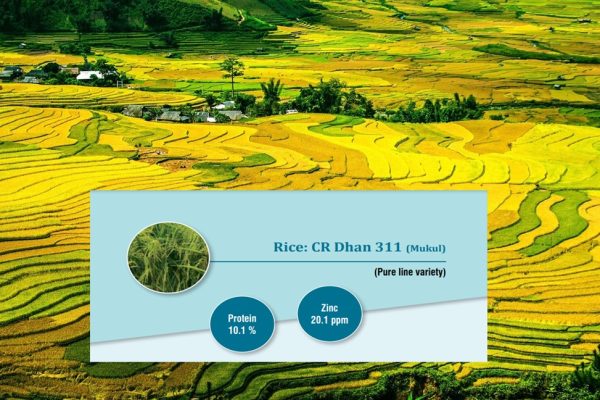
Understanding Biofortified Seeds
Biofortified seeds refer to seeds that have been genetically modified or conventionally bred to enhance the nutritional content of the resulting crops. The goal of biofortification is to address specific nutrient deficiencies in certain staple foods, thereby improving the nutritional status of populations that rely heavily on these crops. Biofortification typically focuses on increasing the levels of essential vitamins and minerals in crops.
Biofortification seeds further can be explained based on our specific needs –
Targeted Nutrients: Biofortification aims to increase the levels of specific nutrients in crops that are commonly deficient in the diets of some of the populations around the world. Common targets include vitamin A, iron, zinc, and other essential micronutrients.
Conventional Breeding vs. Genetic Modification: Biofortification can be achieved through traditional breeding methods or genetic modification (GMO). Conventional breeding involves selecting and crossbreeding plants with desirable traits, while genetic modification involves the insertion of specific genes to achieve the desired nutritional outcome.
Examples of Biofortified Crops
Golden Rice: A genetically modified rice variety designed to produce beta-carotene, a precursor of vitamin A. Vitamin A deficiency is a significant health issue in many developing countries.
Iron-Biofortified Beans: Certain varieties of beans have been bred to contain higher levels of iron, addressing iron deficiency, a common nutritional problem worldwide.
Zinc-Biofortified Wheat: Some varieties of wheat have been biofortified to increase zinc levels, targeting populations with zinc deficiency.
Global Impact of Biofortified crops
Biofortification is seen as a sustainable approach to addressing malnutrition, especially in regions where people heavily rely on a few staple crops. By improving the nutritional content of commonly consumed foods, biofortified crops have the potential to positively impact public health.
Acceptance and Regulation: The acceptance of biofortified crops can vary among different regions and communities. Regulatory frameworks and public perceptions play a crucial role in the adoption of biofortified seeds.
Collaborative Efforts: Biofortification initiatives often involve collaboration between agricultural scientists, nutritionists, policymakers, and local communities. These collaborative efforts aim to ensure that biofortified crops are safe, effective, and well-received by the target populations.
Nutritious diet is vital for proper growth and development in humans. It helps preventing diseases, besides maintaining the body metabolism for physical- and mental- wellbeing. Food provides energy, protein, essential fats, vitamins, antioxidants and minerals to meet our daily metabolic requirements. Most of them cannot be synthesized in human body, therefore are to be supplemented through diet. Further, anti-nutritional factors present in edible parts of the food exert adverse effects on human health (ICAR)
While biofortification holds promise for addressing malnutrition, it is essential to consider ethical, environmental, and safety aspects associated with the development and deployment of biofortified seeds. Ongoing research and careful monitoring are necessary to assess the long-term impact of biofortification on human health and the environment.
ICAR Research on Biofortified crops:
Indian Council of Agricultural Research (ICAR) has improved the nutritional quality in high yielding varieties of cereals, pulses, oilseeds, vegetables and fruits using breeding methods. Special efforts were initiated during 12th Plan with the launching of a special project on Consortium Research Platform on Biofortification. Concerted efforts in collaboration with other national and international initiatives has led to the development of 71 varieties of rice (7), wheat (22), maize (11), pearl millet (8), finger millet (3), small millet (1), lentil (2), groundnut (2), linseed (1), mustard (3), soybean (3), cauliflower (1), potato (2), sweet potato (2), greater yam (2) and pomegranate (1). In addition, a large number of advance elite materials are in pipelines and will be released in due course of time. These biofortified varieties assume great significance to achieve nutritional security of the country. Special efforts are being made to popularize these biofortified varieties among masses. Quality seeds of biofortified varieties are being produced and made available for commercial cultivation. Extension Division of ICAR has also launched two special programmes viz. Nutri-sensitive Agricultural Resources and Innovations (NARI) and Value Addition and Technology Incubation Centres in Agriculture (VATICA) for up-scaling the biofortified varieties through its Krishi Vigyan Kendras (KVKs).
See more here to view the types of Biofortified crops from ICAR : https://iimr.icar.gov.in/wp-content/uploads/2020/12/Biofortified-Varieties-Book_V3_ICAR.pdf
Image credit: Image by PublicDomainPictures from Pixabay (free for commercial use)
.
Author: Sumana Rao | Posted on: April 26, 2024
« Ayurveda Interventions To Help Improve Nutrition Intake In Adolescent Girls Health And Sanitation Are Linked Together »






















Write a comment